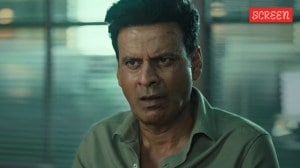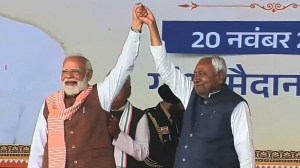A nearly 70-minute-long parade was held in Beijing’s Tiananmen Square on Wednesday to commemorate 80 years since the end of World War II (1939-45).
In his address, delivered in the presence of leaders of 26 countries, including those of Russia, North Korea, and Iran, President Xi Jinping invoked history to emphasise the strength of the Chinese nation, which he said would not be “bullied”.

The reference to the United States seemed obvious — indeed, President Donald Trump responded on social media, asking Xi to “please give my warmest regards to Vladimir Putin, and Kim Jong Un, as you conspire against The United States of America”.
The parade was meant to showcase China’s growing military arsenal. Anushka Saxena, a staff research analyst whose work at the Takshashila Institution focuses on the Chinese People’s Liberation Army (PLA), told The Indian Express that while a parade is not a “metric of combat efficacy,” it still reveals important information and signals.
Context of the parade
Beijing has hosted several military parades in the past, including one a decade ago to mark 70 years of the end of World War II.
Suyash Desai, a non-resident fellow at the US-based Foreign Policy Research Institute, who studies China’s defence, foreign, and nuclear policies, said this week’s parade was among the biggest-ever in scale, with 45 formations on display.
The Chinese demonstration of military prowess fits in the larger context of the way in which Beijing has attempted to project itself in global geopolitics. It comes alongside the assertion over the last several years of China’s claims over Taiwan and the South China Sea.
Story continues below this ad
All the key components of China’s defence apparatus were visible, Saxena said: “The tri-services and the rocket force, the four support arms, peacekeeping units, all-women units, unmanned combat and robotics units, and other entities demonstrated their commitment to fighting and winning wars.”
Weapons capabilities
“The parade aimed at not only displaying China’s military might but also China’s improved deterrence posture in conventional and unconventional spheres, using newer warfare technologies. This was apparent in the open display of unmanned and counter-unmanned systems”, Desai said.
While the efficacy of China’s military is often questioned given its lack of battle experience, “the PLA has a history of learning from others’ wars”, Desai said. These would include the Russia-Ukraine war, the conflicts in the Middle East, and Operation Sindoor.
China has made significant advancements in drone warfare and drone-based defence systems, which Desai described as “possibly its biggest learnings from all the conflicts in the world in the last three to four years”.
Story continues below this ad
China’s defence indigenisation was also on display, which, Desai said, “helps its defence export industry, which is growing in South Asian, African, Latin American and West Asian countries”.
“In terms of weapons, the world has to worry about the Chinese new DF-61, possibly the longest-range intercontinental ballistic missile, displayed for the first time,” he said. China also displayed its complete nuclear triad and hypersonic missile capabilities, capable of launching from air, land, and sea.
Saxena pointed to the emphasis on manned-unmanned teaming — unmanned combat platforms such as robot wolves, “Sharp Sword” reconnaissance and strike drones — showing China’s transition into “new-age warfare”.
Another novel addition to China’s arsenal is the YJ-19 hypersonic missile, which powers itself by a mixture of air and fuel during high-speed flight. The Dongfeng 5-C missile was also unveiled, the latest in the series of intercontinental missiles, with a reported range of 20,000 km.
Story continues below this ad
“It was shown to be propelled by liquid fuel and not solid fuel, which is interesting because the latter is usually cheaper and takes less time to lock and load,” Saxena said.
China’s messaging
With the Second World War as the backdrop, the Communist Party sought to broadcast the message that the “same spirit remains alive in the PLA and the citizens today”, Saxena said. “A secondary message”, she said, “was to communicate to allies that China has built significant strength and capacity to support them in times of need”.
At the same time, the parade pointed to China’s mistrust of the Western world. President Xi said countries were adopting a path of zero-sum games instead of trying to create “win-win” cooperation, an expression that Beijing uses often. “It speaks to how China fears that even managed competition with the West will still curtail its continued rise,” Saxena said.
She also pointed to Xi’s vow that the “Great Rejuvenation of the Chinese nation” would happen – and the fact that “reunification” with Taiwan is an important part of that “rejuvenation”.
Story continues below this ad
Desai said that Xi’s speech reiterated Mao Zedong’s old slogan about the Party “commanding the Gun”. “Xi’s speech and every major slogan resolutely reinforced that the army should be loyal to the party and follow its instructions with absolute discipline,” he said.








































